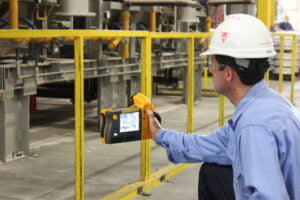 The ultimate goal of predictive maintenance is to reduce valuable machinery downtime. Predictive maintenance has become an essential tool for almost every industry because of its efficiency in detecting faults during the early stages of failure, allowing for a much simpler, safer, and cheaper repair solution than the alternative: catastrophic failure. Today, companies are adopting predictive technologies at staggering rates. According to Markets and Markets Research, the market size for predictive maintenance technologies is just above $1.4 billion and is expected to eclipse $5 billion by 2021 with the help of IoT.
The ultimate goal of predictive maintenance is to reduce valuable machinery downtime. Predictive maintenance has become an essential tool for almost every industry because of its efficiency in detecting faults during the early stages of failure, allowing for a much simpler, safer, and cheaper repair solution than the alternative: catastrophic failure. Today, companies are adopting predictive technologies at staggering rates. According to Markets and Markets Research, the market size for predictive maintenance technologies is just above $1.4 billion and is expected to eclipse $5 billion by 2021 with the help of IoT.
As with any program, there is a very simple formula for predictive maintenance success. There should be an owner, someone who is held accountable and responsible. There should also be attainable goals for the program; understanding what program success looks like may mean that the owner needs to go through extensive training. An evaluation of current program maturity should follow with a comparison with best practice. Then a proper roadmap can be built to bridge the current state to the future, best practice state. Because most companies operate with limited resources, one of the toughest jobs is going to be prioritizing the time, money, and energy spent on certain initiatives to close the gap.
In order to enable predictive maintenance, there are three key components organizations will need to get right:
1) Securing the right people;
2) Implementing the right processes;
3) Deploying the right technology.
Jeremy Wright, Director of Product Management, at Advanced Technology Services, Inc. (ATS) shares his insight on how to get these three key components right in this ebook by ATS and Generis Group.
Click through to learn more.
